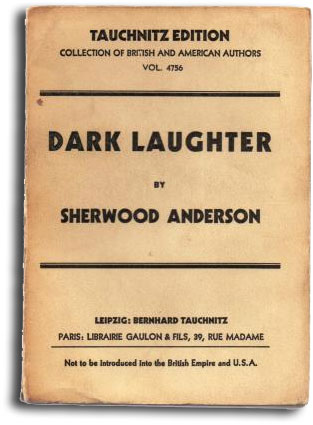Dark Laughter
Sherwood Anderson
The title comes from the protagonist who spent several months in New Orleans, where he watched and listened to African Americans, and thought ‘listening to their dark laughter, that they lived as simply as children and were happy.’ Striking illustrated endpapers in black and lime green depict a panoramic collage of African American musicians and a townscape.
In the novel, Clara (the protagonist’s wife whom he leaves) had been drawn to Kate Chancellor during her college days. Kate is portrayed sympathetically as an intelligent, passionate woman, and there is a suggestion of Clara’s temporary fascination or attraction to her. This relationship or attraction is not extensively developed in the novel but is presented as part of Clara’s past experiences and character development.
This portrayal is notable considering the novel was published in 1925, when such sympathetic depictions of lesbian characters were uncommon in mainstream American literature. Anderson’s inclusion of this character and Clara’s response to her reflects his broader interest in exploring sexual identity and liberation beyond conventional boundaries of the time.
Click here for a list of Editions and Revisions
Check for it on:
Details
| Genre | Pulp; Checklist by Marion Zimmer Bradley; Black Interest |
| Publication Date | Sep-33 |
| Publisher | Bernhard Tauchnitz; Librairie Gaulon & Fils |
| No. of Pages | 263 |
| Notes | Tauchnitz Edition, Collection of British and American Authors vol. 4756. |
| Language | English |
| Rating | NotRated |
| BookID | 2692 |

